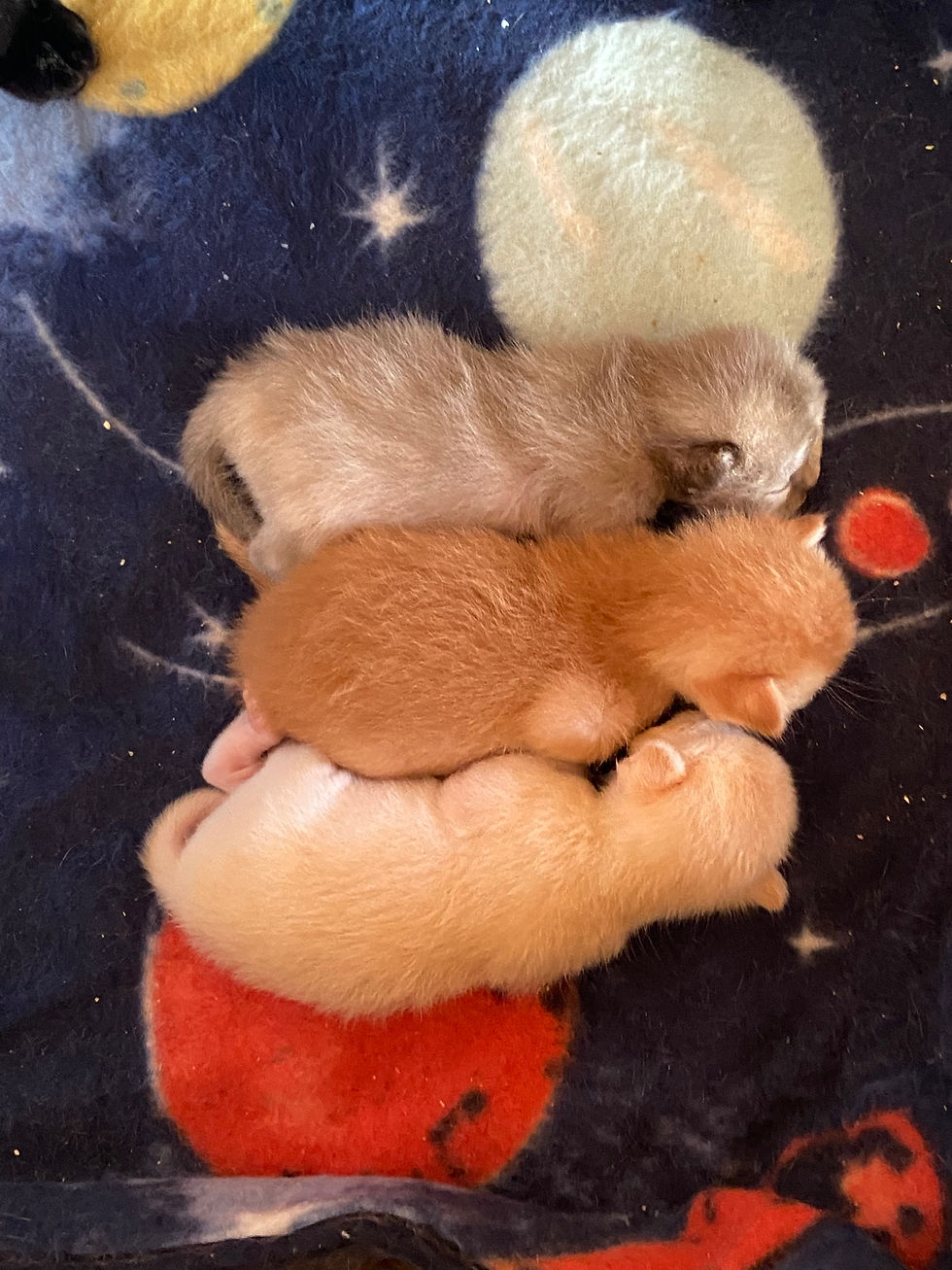Surviving "Poohs and Wees Weeks": How to Litter Train Kittens with Less Mess and More Success
- miriamm00
- May 1
- 3 min read
Updated: Oct 30
Ask any cat breeder about their least favorite part of raising kittens, and you’ll likely hear a familiar groan: “poohs and wees weeks.” That charming 5–7 week window when the kitten room goes from fluffy paradise to something resembling a feline crime scene. The mess can be intense, the smell unforgettable—but thankfully, it doesn’t have to be that way forever.
Over the years, I’ve picked up a handful of tricks that have helped shorten the chaos and get kittens confidently using the litter tray sooner. Here's how to guide your little fluffballs from clueless to clean in just a few weeks.
Start Early – Around 4 Weeks
As soon as the kittens start toddling around, it’s time to introduce a litter tray. Around 4 weeks of age is the sweet spot. At this point, their instincts are starting to kick in—but they still need a little nudge (and a lot of repetition).
Tip: Choose a soft, non-toxic litter. Recycled paper pellets, fine sand, or oatmeal are all gentle on tiny paws. Avoid clumping litters or clay-based options at this age—they can cause gut issues if ingested (and trust me, some kittens will try to taste it).
Tray Placement: Location is Everything
Kittens don’t go out of their way to find a toilet when they’re just learning. The best approach? Make it unavoidable. Put the tray right next to the sleeping box—so close they basically have to walk through it to leave. Kittens often relieve themselves just after waking, so having the tray within reach builds a natural habit.
Keep It Familiar (and Slightly Smelly)
Here’s a trick that works wonders: Don’t over-clean the litter tray in the first week or two. Scoop out the poop, but leave just enough scent behind for the kittens to connect the dots. The smell signals: “This is the place to go.” Meanwhile, keep a close eye on their bedding. If it starts to smell like a toilet, the kittens may confuse it with the litter tray. Swap out any soiled bedding quickly to break that habit.
Keep the room as clean as possible
Make sure your kitten room has hard, easy-to-clean surfaces — it makes life so much easier when things get a little messy! I start by cleaning with a bleach-based detergent and warm water (I use Domestos, which is readily available here in New Zealand) and always keep a spray bottle and paper towels within reach. An experienced breeder once suggested wiping everything down afterwards with white vinegar, and since I started doing this, the kitten room smells noticeably fresher. I now keep a separate spray bottle of vinegar handy just for that final wipe-down.
Always rinse or let surfaces dry completely before letting kittens back into the room, and keep cleaning products well out of their reach — even the safest setups need a moment to air out before the chaos resumes!
Hands-On Help
Whenever you’re in the kitten room, place the kittens onto the litter tray—especially after meals, naps, or playtime. These are prime potty moments, and your guidance helps them associate the tray with those urges.
This repetitive reinforcement during the 4–6 week window is crucial.
Transitioning to Regular Litter
By the time the kittens are 6 weeks old, most will be using the tray consistently. At this stage, it’s safe to start introducing your regular litter—I personally switch to pine pellets.
If you're switching litter types, mix the new litter in gradually over a few days so the kittens adjust smoothly.
Upgrading the Setup
As kittens grow, so should their toilet setup:
8 weeks: Switch to a tray with slightly higher sides. They’ll be strong enough to climb in and out by now, and it helps contain the scatter.
9 weeks: Time for a big step! Move the tray outside their run and install a small cat door. This encourages independence and mimics how they’ll need to manage things in a larger space or new home.
Final Thoughts
“Poohs and wees weeks” might never be completely mess-free—but with the right setup, a little patience, and some hands-on help, you can survive this stage with minimal drama and maximum progress.
Remember: kittens want to be clean. Your job is just to make it easy, obvious, and accessible. Before you know it, that little litter tray will be a natural part of their routine—and you can enjoy the kitten room without feeling like you need to wear a hazmat suit.




Comments